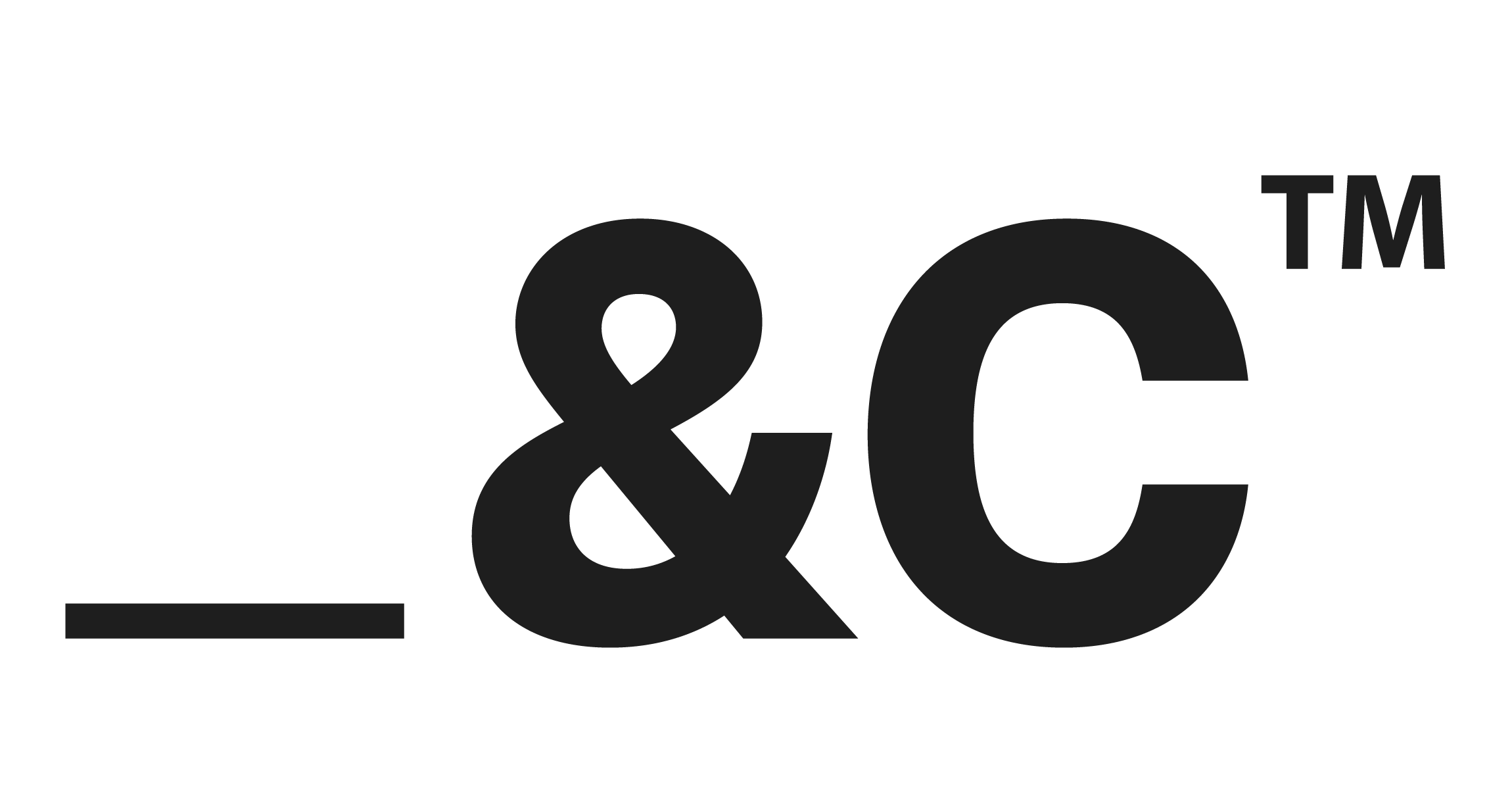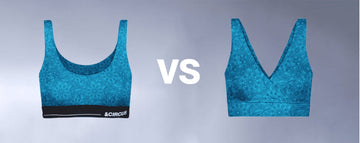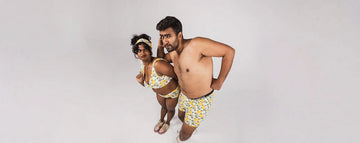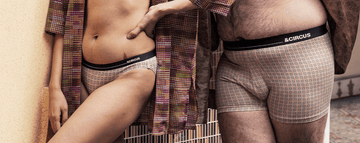It's a rainy morning in Los Angeles, and over 2,000 women stand in line, undeterred by the drizzle, waiting for their chance to model for Good American, a brand that's made waves for its inclusive sizing up to US32. Among them is a mother clutching a coffee, her postpartum body a testament to resilience, hoping her story might resonate on a runway. There's a trans woman nearby, her presence a quiet demand for designs that affirm her identity. Across the country, a couple shares their switch to biodegradable innerwear on social media, their posts sparking conversations about sustainability. These aren't just people they're the voices reshaping fashion, one story at a time.
Uncomfortable underwear shouldn't steal your confidence. At Andcircus, we craft ultra-soft, sustainable Lenzing Modal Micro® innerwear for every body, XS to 5XL. From briefs to bras, our custom packs fit you perfectly. Shop risk-free with our 100% satisfaction guarantee and embrace comfort that includes everyone. #LoveEveryBody. Shop Now!
How Personal Stories Are Reshaping Sustainable Fashion
In an industry often criticized for its detachment think fast fashion's race to replicate catwalk trends at breakneck speed, as Wikipedia notes, with brands like H&M and Shein churning out trendy clothing by exploiting low-wage labor something human is breaking through. Personal stories, raw and unfiltered, are becoming the thread that stitches together a new vision for fashion, particularly in the intimate apparel sector. Eco-friendly micromodal innerwear, designed for men, women, and maternity, is a niche where these narratives thrive, blending comfort, sustainability, and body positivity into products that feel personal because they are.
Storytelling isn't new, but its role in fashion is evolving. It's no longer just about glossy campaigns or celebrity endorsements. Today, it's the postpartum mother sharing her need for supportive, stylish maternity briefs, or the sustainability advocate praising biodegradable fabrics online. These voices aren't shouting from billboards they're whispered in Instagram comments, detailed in blog posts, or shared in focus groups. And brands, especially those rooted in ethical values, are listening.
The Power of Authentic Narratives
The rise of user-generated content has turned customers into co-creators. Social media platforms, particularly X, amplify these voices, where a single post about a poorly fitting bra or a call for gender-neutral designs can ripple into product changes. Take the example of Good American, which, as Vogue Business reports, saw $200 million in sales in 2022, a 30 percent jump from the prior year, largely because it embraced sizes up to US32 from day one. Their open casting calls, like the one in LA, aren't just stunts they're a direct line to real people's needs, from stretchy denim to inclusive innerwear.
Campaigns are shifting too. Brands are moving beyond token diversity to prioritize body positivity, maternity comfort, and gender neutrality. A trans individual's feedback on restrictive cuts can spark a new line of affirming underwear. A couple's viral thread about choosing eco-friendly micromodal over synthetic fast fashion can nudge a brand toward greener sourcing. These stories don't just sell they shape. They push companies to confront their blind spots, whether it's sizing, fit, or environmental impact, and to act with transparency. As Heuritech points out, consumer trust is waning, with transparency and inclusivity gaps topping the industry's challenges in 2025. Personal narratives bridge that gap, turning skepticism into loyalty.
Stories That Change the Game
Consider the postpartum mother who, after struggling with ill-fitting maternity wear, shared her frustration in a brand's online forum. Her detailed account craving soft, stretchy micromodal that didn't dig into her changing body caught the eye of designers. The result? A new maternity line with adjustable waistbands and breathable, eco-friendly fabrics. Or take the trans individual who emailed a small innerwear brand, describing how traditional cuts felt alienating. Their feedback led to a gender-neutral collection, with prototypes tested by community members before launch. These aren't hypotheticals they're real shifts, born from voices that brands can no longer ignore.
Then there's the couple who ditched fast fashion for biodegradable innerwear. Their X thread, detailing how micromodal feels like “wearing a cloud” while decomposing naturally, went viral, racking up thousands of likes. The brand they championed saw a spike in orders and used the feedback to refine its marketing, emphasizing sustainability over trend-chasing. These stories aren't just feel-good anecdotes they're data points. They guide R&D, influence supply chains, and prove that listening isn't just ethical; it's profitable.
Navigating the Challenges
Listening is one thing; acting is another. Scaling personalization across collections is a logistical nightmare. As Heuritech notes, supply chain disruptions driven by climate, conflict, and cost complicate efforts to source sustainable materials like micromodal while keeping prices accessible. Then there's the risk of tokenism. A brand might spotlight a diverse model or share a compelling story, only to fall short on structural change, like expanding size ranges or reducing textile waste. Consumers notice. A 2023 report from Future Market Insights, cited in Vogue Business, pegged the plus-size fashion market at $288 million, yet brands still hesitate to invest in bigger sizes, citing “fit issues” or cost. That's not listening that's lip service.
Balancing authenticity with commercial storytelling is another hurdle. Brands must respect privacy while amplifying voices. A raw, heartfelt post about body image can't be reduced to a marketing tagline without losing its soul. Yet, when done right, these stories build trust. They show a brand isn't just selling underwear it's solving real problems, from postpartum comfort to eco-conscious living.
From Stories to Sustainability
Eco-conscious brands have a unique edge here. Micromodal, a biodegradable fabric derived from beech trees, aligns perfectly with the sustainability demands Heuritech flags circular production and reduced textile waste. By weaving personal stories into R&D, brands can prioritize what matters say, developing a maternity brief that's both supportive and compostable. Collaborative design is key. Some brands now invite customers to beta-test prototypes, ensuring products meet real needs before hitting shelves. This isn't just innovation; it's accountability.
Storytelling also builds loyalty. When a brand shares how a customer's input led to a new design, it's not just marketing it's proof of listening. That transparency counters the declining consumer trust Heuritech warns about, fostering a community where buyers feel seen. And in an industry where fast fashion's low-wage outsourcing perpetuates inequality, as Wikipedia details, ethical brands can stand out by prioritizing fair labor and sustainable materials, all guided by the people who wear their clothes.
Stitching the Future Together
The future of fashion isn't in trend-chasing it's in listening. Experts predict storytelling will shape not just design but entire supply chains, with brands like Good American leading the way by embracing inclusivity from the start. Transparent sourcing, adaptive innerwear lines, and story-based shopping experiences where customers can filter products by values like sustainability or body positivity are on the horizon. In 2025, as Heuritech notes, economic volatility and greenwashing pressures will force brands to prove their values. Those who listen to real voices mothers, advocates, everyday wearers will thrive.
Back in that rainy LA line, the women waiting to model aren't just faces; they're stories waiting to be heard. Their experiences, shared in whispers or viral posts, are stitching a new fabric for fashion one that's sustainable, inclusive, and deeply human. For brands like those crafting eco-friendly micromodal innerwear, these voices aren't just feedback. They're the blueprint for a wardrobe that doesn't just fit the body but fits the values of the people who wear it.
Frequently Asked Questions
How are personal stories influencing changes in the fashion industry?
Personal narratives are playing a powerful role in shaping fashion trends by highlighting real-life needs, values, and experiences. These stories help brands better understand diverse customer expectations, particularly around inclusivity, comfort, and sustainability, leading to more consumer-aligned product development.
Why do fashion brands incorporate individual experiences into their design process?
Fashion brands increasingly rely on personal testimonials to gain authentic insights into lifestyle preferences and social identity. By integrating lived experiences, they can design clothing that resonates emotionally and functionally with consumers, particularly in evolving categories like adaptive or body-positive apparel.
What impact do consumer stories have on sustainable fashion trends?
Stories shared by eco-conscious individuals often reveal challenges with fast fashion and a desire for ethical choices. These personal accounts have encouraged brands to prioritize biodegradable fabrics, transparent sourcing, and long-lasting design driving industry-wide momentum toward sustainability.
Disclaimer: The above helpful resources content contains personal opinions and experiences. The information provided is for general knowledge and does not constitute professional advice.
You may also be interested in: Role of the Fashion Industry in Shaping Body Image
Uncomfortable underwear shouldn't steal your confidence. At Andcircus, we craft ultra-soft, sustainable Lenzing Modal Micro® innerwear for every body, XS to 5XL. From briefs to bras, our custom packs fit you perfectly. Shop risk-free with our 100% satisfaction guarantee and embrace comfort that includes everyone. #LoveEveryBody. Shop Now!







































